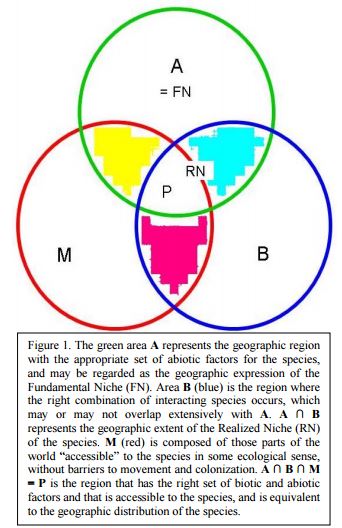Soberón and Peterson present a discussion that considers two broad ways that researchers generally estimate the fundamental niche of a species. The first method discussed is the mechanistic approach which considers the studied physiology that contributes to positive fitness with information provided from a geographic information system to display suitable habitats. The second method indirectly identifies important characteristics of species fitness by utilizing survey data and climate factors associated with species occurrence. While the first method may provide a deeper understanding of within species drivers that contribute to their distribution, it may neglect the effects of species interactions. While the second method provides opportunity to explicitly model species interactions, yet the correlative approach may be subject to some bias. Soberón and Peterson also consider what role scale plays in species distribution, and how various factors can differ in their importance due to changes in scale. Another consideration is how absence species information needs to be carefully considered with regards to study objective. Lastly, Soberón and Peterson stress the importance for model validation and suggest the need for well developed methods. This paper provides insight into key differences between mechanistic niche modeling and the ‘correlative approach’. However, one improvement to the findings in this paper could be a better developed case study (potentially two) or more mathematical reasoning.

